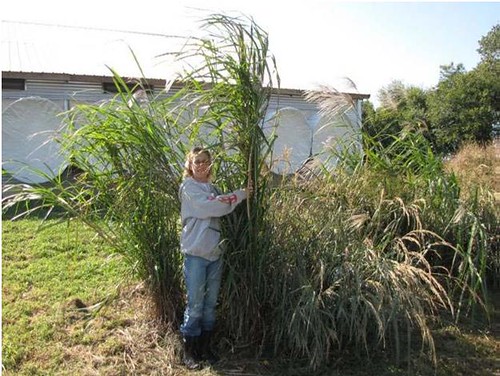The Biomass Crop Assistance Program, or BCAP, is still in its infancy, but its potential success has producers and businesses wanting more.
“We have people on a waiting list,” said Tim Wooldridge, Arkansas project manager with MFA Oil Biomass. MFA was selected by USDA to manage three of nine project areas in fiscal year 2011. Each project area was awarded federal funding to provide incentives to farmers to grow non-food crops that can be processed into biofuels. “Our initial target in the Arkansas project was 5,000 acres, which we surpassed in signing up 6,588 acres. We now have 1,500 acres on a waitlist. We could easily get another 6,000.”
Those 6,588 acres will be planted this spring with Miscanthus, a perennial grass that can be dried and compressed into fuel pellets. These pellets will work toward President Obama’s goal of increased energy independence by decreasing U.S. dependence on foreign oil. The harvesting and processing of the grass will have an economic impact on communities by creating jobs.

“It has been a phenomenal success in Arkansas,” said Wooldridge. “I receive calls daily from farmers hoping that we expand.”
Scott Coye-Huhn, senior vice president of corporate development and chief legal officer of Aloterra Energy LLC, mirrors that sentiment. Aloterra Energy manages four project areas — three of which are through the MFA Oil Biomass partnership — in Ohio, Missouri, Arkansas and a portion of Pennsylvania.
Coye-Huhn said it took a lot of hard work and long hours to initially educate farmers about BCAP and how it will help the community. But once it took hold, producers jumped at the chance to participate.
“It has exceeded our expectations. We are surprised at the number of ideas and spin offs that [BCAP] has created. It is really exciting.”
Aloterra also has a waitlist, and together the two companies have hired more than 100 employees to plant Miscanthus on 18,000 acres in the four project areas. Aloterra and MFA Oil Biomass expect to grow each project area to 50,000 acres, which will produce 2.4 million tons of biomass per year.
“To put these initial 18,000 acres into oil and gas terms, they can produce a reserve of 10,000,000 barrels of liquid fuels. At full maturity, these projects will be ten times larger and will have a real impact on our fuel supplies.”
According to Coye-Huhn, based on a third party projection, the BCAP project is expected to produce 3,600 new jobs in all four project areas, which will have a $200 million economic impact.
USDA is currently accepting applications for the next round of BCAP project areas. For more information, visit http://www.fsa.usda.gov/bcap.
BCAP, administered by USDA’s Farm Service Agency (FSA), is an important element of our national energy strategy to address high fuel prices and reduce reliance on petroleum. To create jobs in rural communities, drive economic growth, and help reduce our dependence on foreign oil, USDA is aggressively pursuing investments in renewable energy, investing in or making payments to over 5,700 renewable energy and energy efficiency improvement projects. More than 130 biodiesel and ethanol projects funded by USDA are currently producing almost 3.7 billion gallons of biodiesel and ethanol annually, enough fuel – in equivalence to gasoline – to keep five million vehicles on the road every year. In addition, USDA provided financial assistance for blender fuel pumps so drivers can pump fuels with higher ethanol mix into their gas tanks. This year, these programs provided financial assistance to help support nearly 250 blender fuel pumps.
